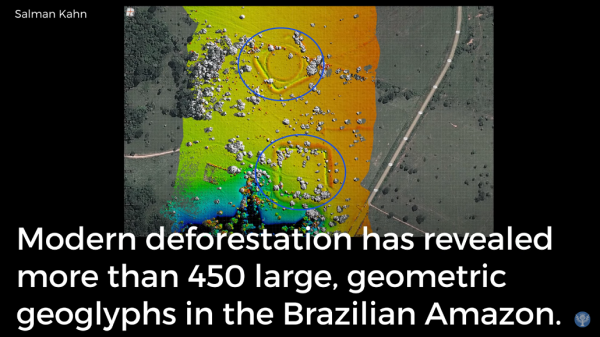By Samille Abada, | March 06, 2017

For many years, researchers have debated how human activity has shaped the landscape of a large portion of the Amazon forest. (YouTube)
Perhaps, the Amazon was the most prominent sample of untamed wilderness. However, the world's largest rainforest is somewhat a civilized one, given the fact that there are people who have lived there for thousands of years, farming, gathering, and hunting.
For many years, researchers have debated how human activity has shaped the landscape of a large portion of the Amazon forest. A new study has described how the natives changed the rainforest for more than 8,000 years.
Like Us on Facebook
It was found out that non-domesticated trees and palms are less likely to be present in the forest than domesticated ones. Moreover, there are clusters of domesticated plants in the Amazon which are mostly found in pre-Columbian settlements.
These are places where ancient people lived before Christopher Columbus arrived, according to Scientific American. Researchers say that the pattern may lead to the discovery of other ancient settlements that are yet unknown in the Amazon forest.
Ecologist Carolina Levis from National Institute for Amazonian Research in Manaus, Brazil said there are still 20 kinds of nut and fruit trees that can be found in the Amazonian forests out of dozens of species that are domesticated, in whole or in part, by the natives.
According to Science News, a variety of tree species domesticated by ancient people have been found on and around archaeological sites in Amazon. The ecologist further explained that the trees are considered as a heritage of the past inhabitants of the place.
An archaeologist from the University of Victoria in Canada Peter Stahl further added that the indigenous cultures are highly developed and paved the way for the improvement of the Amazonian forests.
-
Use of Coronavirus Pandemic Drones Raises Privacy Concerns: Drones Spread Fear, Local Officials Say

-
Coronavirus Hampers The Delivery Of Lockheed Martin F-35 Stealth Fighters For 2020

-
Instagram Speeds Up Plans to Add Account Memorialization Feature Due to COVID-19 Deaths

-
NASA: Perseverance Plans to Bring 'Mars Rock' to Earth in 2031

-
600 Dead And 3,000 In The Hospital as Iranians Believed Drinking High-Concentrations of Alcohol Can Cure The Coronavirus

-
600 Dead And 3,000 In The Hospital as Iranians Believed Drinking High-Concentrations of Alcohol Can Cure The Coronavirus

-
COVID-19: Doctors, Nurses Use Virtual Reality to Learn New Skills in Treating Coronavirus Patients











